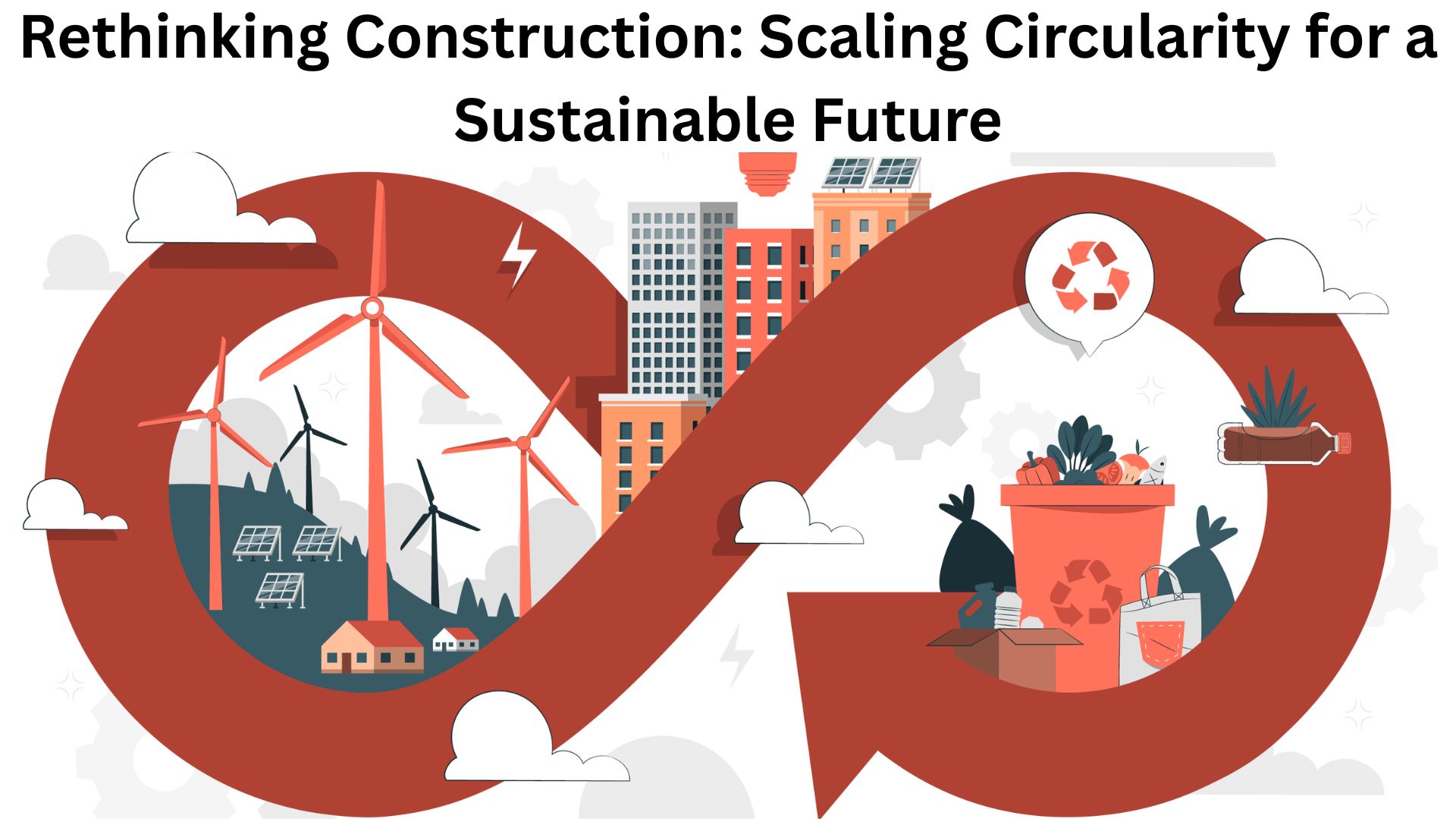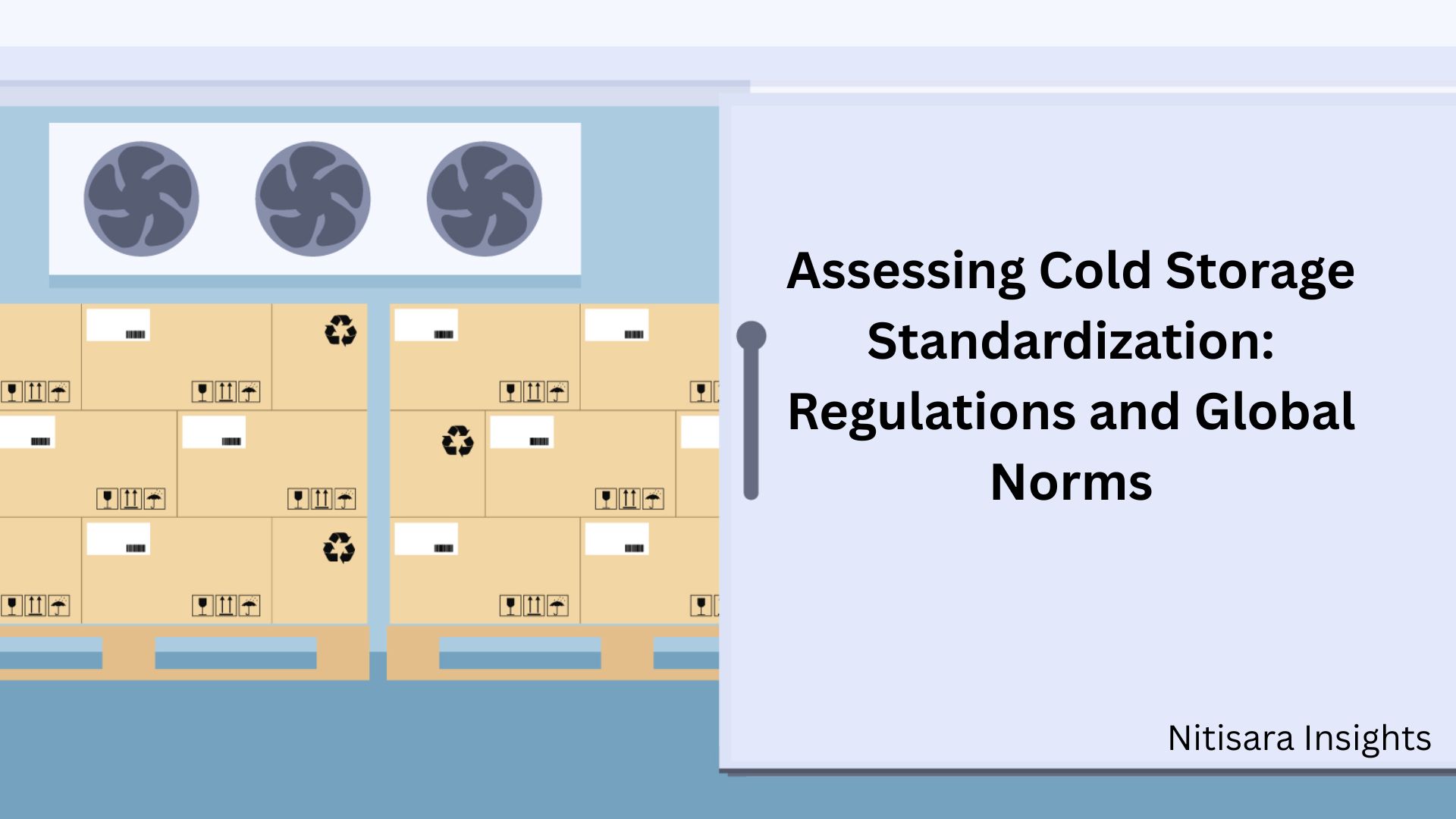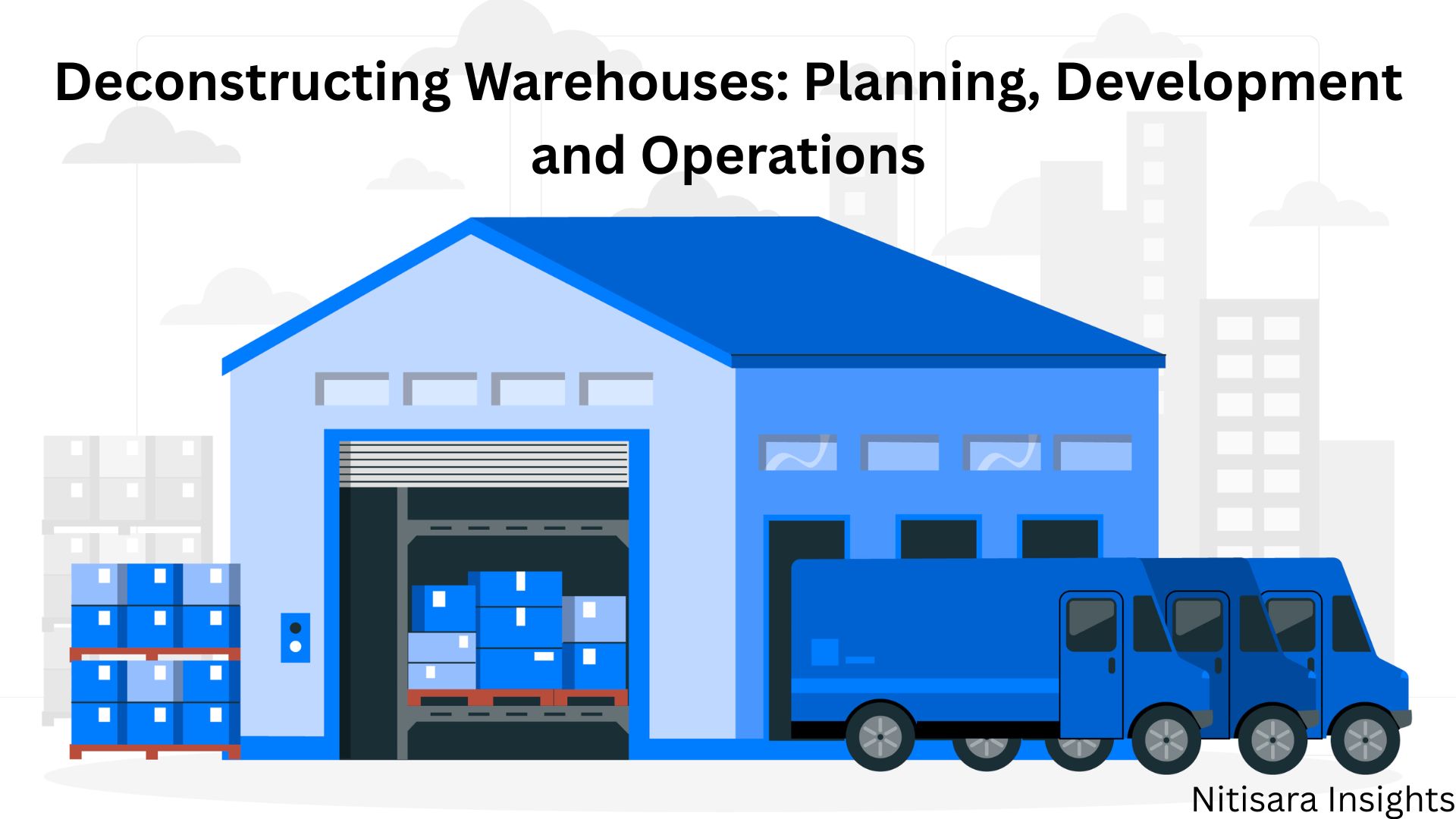
By Niteen Yadav, Researcher, Nitisara
Construction consumes up to 50% of global raw materials, produces 30–40% of global waste, and contributes nearly 39% of total carbon emissions. This blog explores the structural foundations of circular construction and how it redefines traditional linear processes by emphasizing long-term value creation across design, materials, and lifecycle management. We will examine the key barriers to adoption, the economic and environmental drivers for change, and the strategic pathways—including digitalization, policy reform, and collaborative innovation—that are reshaping the future of the built environment.
As of 2023, China’s GDP is approximately $19 trillion. The total trade volume (exports and imports) for 2022 stood at around $6.5 trillion, highlighting China’s pivotal role in global trade in which exports are valued at $3The global construction sector, a significant consumer of raw materials and a major contributor to waste and carbon emissions, stands at a pivotal juncture. The traditional linear “take, make, dispose” model is no longer sustainable, facing mounting environmental pressures, economic instabilities, and increasing societal demands for responsible practices. The transition to a circular economy in construction is not merely an environmental aspiration but a strategic imperative for long-term success, economic resilience, and environmental preservation. This transformative shift promises substantial economic opportunities, with estimates suggesting a potential $700 billion in annual global savings by 2030 and the creation of millions of new jobs.
Why the Circular Economy Is the Future of the Built Environment
The construction industry is at a critical turning point. As one of the largest consumers of raw materials and generators of waste globally, its environmental impact is massive. Traditional building practices follow a linear “take, make, dispose” model—one that is increasingly unsustainable in a world facing resource depletion, rising emissions, and urgent climate goals.
Enter the circular economy: a transformative approach that aims to keep materials in use for as long as possible, minimize waste, and regenerate natural systems. It’s more than just recycling—it’s a complete redesign of how buildings are conceived, built, used, and eventually disassembled. By shifting to this model, the construction sector can dramatically reduce its environmental footprint while unlocking long-term economic and social value.
At the core of this shift are guiding principles outlined by the Ellen MacArthur Foundation: eliminate waste and pollution, keep products and materials in use at their highest value, and regenerate nature. The World Green Building Council builds on this with strategies tailored to construction—designing for disassembly, extending material lifespan, reducing consumption, and eliminating waste altogether. Add to that the practical “7R” framework—Rethink, Refuse, Reduce, Reuse, Repair, Remanufacture, Repurpose, and Recycle—and the path forward becomes actionable.
The message is clear: the circular economy is no longer optional, it’s essential. For the construction industry, embracing it means not only reducing harm but also building resilience, cutting costs over time, and creating a built environment fit for the future.
Economic Benefits
Circular infrastructure projects deliver significant economic advantages, moving beyond mere cost reduction to foster strategic growth and resilience. Cost savings are a direct and immediate benefit, achieved through substantial reductions in material procurement and waste disposal expenses by prioritizing material reuse. For example, recycled concrete aggregate can be 20-30% cheaper than newly quarried aggregate, and recycling one ton of steel saves considerable energy and raw materials. Energy-efficient designs, a core tenet of circularity, further lower operational costs over a building’s entire lifecycle.
Beyond these direct savings, circular practices enhance resilience against supply chain disruptions. By reducing reliance on volatile global supply chains and finite virgin resources, the industry can mitigate risks associated with material shortages and unpredictable price fluctuations, fostering greater stability in project planning and execution. This shift from dependence on external, volatile markets to internal, closed-loop systems represents a significant de-risking of operations.
The circular economy also acts as a catalyst for innovation and the creation of new revenue streams. It encourages the development of innovative business models such as product-as-a-service, sharing platforms, and material recovery and recycling initiatives, opening new avenues for economic activity. The Ellen MacArthur Foundation projects a potential $700 billion in annual global savings by 2030 from embracing circularity in construction, a figure that encompasses both direct cost reductions and the value generated from these new markets and de-risking strategies. This transformation drives innovation in materials, construction methods, and overall business operations, making the industry more dynamic and competitive.
Key Challenges to Scaling Circularity in the Construction Supply Chain
Despite the compelling advantages, the widespread adoption of circular economy principles within the construction supply chain faces significant, often interconnected, barriers. These challenges span technical, economic, policy, and behavioral domains, requiring a comprehensive and coordinated approach for effective mitigation.
Technical & Infrastructural Barriers
A major barrier to circular construction is the lack of circular design principles and standardized approaches for using reclaimed materials. Traditional designs prioritize short-term cost and function, often ignoring end-of-life reuse. Limited expertise, coupled with the perceived complexity of approaches like Design for Deconstruction (DfD) and Modular Construction (MC), slows adoption. The absence of standardized design codes further discourages uptake.
Weak reverse logistics systems add to the challenge. There is inadequate infrastructure for collecting, sorting, and reintegrating materials post-deconstruction, especially from non-prefabricated buildings. The lack of on-site sorting and efficient waste handling makes demolition and landfilling the default option.
Quality assurance is another critical issue. Reclaimed materials lack consistent standards for collection and validation, making it difficult to ensure reliability, particularly for structural elements like timber and concrete. This creates mistrust among risk-averse stakeholders and sustains a preference for virgin materials.
Reliable data sharing across the value chain is also lacking. Tools like Material Passports (MPs) and Environmental Product Declarations (EPDs) remain underused due to poor access to verified material information. This limits transparency and prevents coordination across stakeholders.
Together, these factors create a cycle of low trust and low demand for secondary materials, which discourages investment in their certification and processing. Breaking this cycle requires coordinated action to establish global standards, improve quality control, and enable transparent data exchange throughout the construction ecosystem.
Economic & Market Hurdles
The economic landscape poses major barriers to scaling circularity in construction. High upfront costs for sustainable materials, specialized equipment, and waste management systems deter adoption. Secondary materials remain less competitive due to the lower prices and established supply chains of virgin alternatives, and profitable circular business models are scarce. The traditional “take-use-dispose” model remains dominant, with few successful examples of take-back or producer responsibility systems in the sector.
Logistical challenges, such as remote project locations and the fast pace of construction, add further costs for transporting and storing reusable materials. While circular practices offer long-term savings through reduced operational and disposal costs, the financial system prioritizes short-term gains and minimizes upfront spending, reinforcing linear practices.
Additionally, limited awareness and trust hinder progress. Many industry players lack understanding of circular economy principles and remain skeptical about the quality and performance of recycled materials, despite limited evidence supporting such concerns. Overcoming these barriers requires rethinking financial models, raising awareness, and building confidence in the economic and environmental value of circular approaches.
Pathways to Supply Chain Transformation: Strategies for Scaling
Achieving circularity at scale in the construction supply chain requires a coordinated, multi-dimensional strategy. This includes innovations in design, materials, digital technologies, business models, partnerships, and policy frameworks.
Designing for Circularity
A shift in design thinking is fundamental, prioritizing modularity, adaptability, and designing for disassembly and reuse throughout a building’s lifecycle. Techniques like modular components, standardized connections, and reversible fasteners enable easier material recovery. Tools like Building Information Modeling (BIM) support circular integration from the design phase, facilitating material tracking and lifecycle analysis.
Innovative Materials & Resource Management
Scaling circularity involves using renewable, recycled, and carbon-negative materials such as engineered timber and recycled concrete. Concepts like “urban mining”—the recovery of materials from deconstructed buildings—are becoming more viable. Companies like Holcim and Miniwiz are leading with technologies that turn waste into high-performance materials, making construction debris a resource rather than a liability.
Leveraging Digital Technologies
Digital tools are critical to overcoming data fragmentation and ensuring material traceability. BIM enables design for disassembly and lifecycle monitoring. Digital Twins provide real-time analytics for buildings. Material Passports (MPs), IoT sensors, and AI-driven systems optimize deconstruction, predict waste, and improve sorting. Blockchain ensures data transparency, while platforms like Rheaply and Globechain connect reclaimed material suppliers with buyers. 3D printing also supports localized, low-emission manufacturing using recycled materials.
Evolving Business Models
New models like Product-as-a-Service (PaaS), shared infrastructure, and Extended Producer Responsibility (EPR) incentivize durability, reuse, and lifecycle ownership. Businesses focused on repair, remanufacturing, and “waste-to-resource” solutions are creating value from what was previously discarded, aligning profitability with sustainability.
Fostering Collaboration & Partnerships
Cross-sector collaboration is vital. SMEs and large corporations, along with architects, engineers, suppliers, and waste managers, must work together to close material loops. Industrial symbiosis—where industries use each other’s by-products—boosts efficiency. Cloud-based tools and collaborative platforms streamline communication and planning across stakeholders.
Supportive Policy & Regulatory Frameworks
Governments play a pivotal role by aligning regulations, incentives, and procurement with circular goals. Green Public Procurement (GPP) can drive market demand, while tax incentives and landfill taxes shift economic priorities. Standardization efforts by ASTM and ISO ensure quality and trust in secondary materials. Public funding for R&D and legislative reforms that support new business models is essential. Finally, education and awareness campaigns can equip stakeholders to adopt circular practices more effectively.
Pioneering Projects and Case Studies in Circular Construction
Real-world examples demonstrate the tangible benefits and practical application of circular principles in construction, serving as critical blueprints for broader industry adoption. These pioneering projects highlight how innovative design, material reuse, and collaborative approaches can lead to significant environmental and economic gains.
- The K118 Kopfbau Halle in Winterthur, Switzerland, exemplifies material reuse at scale. This project involved adding three floors of office space to an old warehouse using locally sourced, salvaged steel beams. This approach resulted in an estimated 60% reduction in greenhouse gas emissions compared to building with only new material. The design was heavily influenced by the characteristics of the salvaged components, which were sourced even before the project officially began, demonstrating the importance of early material assessment.
- In Ohio, USA, the Green Valley Road Bridge project showcased cost savings through material reuse. An old bridge was replaced using steel members salvaged from a local bridge. This circular approach resulted in a saving of $51,000 compared to using new material, emphasizing the economic viability of reclaimed structural components when sourced and verified appropriately.
- The Kendeda Building for Innovative Sustainable Design at Georgia Tech, USA, stands as a beacon for salvaged material integration. This project significantly exceeded the Living Building Challenge’s mandate for incorporating reclaimed materials, reusing 28 different materials sourced from various locations. Examples include nail-laminated decks made from salvaged wood from movie and TV sets, slate tiles from a university building’s roof, granite curbs from a demolished archives building, and original heart pine joists from Tech Tower repurposed as stair treads. This diverse material palette highlights the vast potential for high-value reuse across different building components.
- The Circle House in Denmark is envisioned as a blueprint for circular construction, with 90% of its building materials designed to be demounted and reused or resold without loss of value. This social housing project incorporates innovative materials such as cork and old newspapers for the façade, eelgrass and granules for insulation, and used car tires for the flooring’s underlay, demonstrating a holistic approach to minimizing its carbon footprint.
- Gamle Mursten (“Old Bricks”) in Denmark represents a large-scale cleantech production company focused on reusing old bricks. Utilizing patented cleaning technology, the company cleans collected bricks without chemicals, saving over 95% of the energy typically used to manufacture new bricks. Reusing two thousand bricks prevents the emission of one tonne of CO2, with 300,000 old bricks used in the Castle of Hindsgavl hotel alone, saving 150 tons of CO2.
- In Paris, France, the New Station project is a pioneering example, being the first building to achieve the CIRCOLAB V2 standard label in its design phase due to its extensive use of reused construction materials. The project successfully reused 968 tonnes of construction materials and is aligned with the EU Taxonomy in terms of circular economy principles.
- Infinito Delicias in Spain transformed an industrial building in Madrid into a community hub, reusing an impressive 95% of the existing structure and integrating biomaterials and a bioclimatic envelope. Similarly, the “Extending the Cycle” project in Winterthur, Switzerland, involved a warehouse transformation with a three-story addition made from salvaged and recycled materials, resulting in a 60% reduction in carbon emissions (approximately 500 tons).
The circular economy in construction is no longer a future ideal but an emerging necessity shaped by resource scarcity, environmental responsibility, and shifting regulatory landscapes. While the sector faces significant barriers, ranging from fragmented supply chains to policy gaps, targeted interventions, stakeholder collaboration, and innovation can bridge these divides. By embedding circular principles across design, material use, business models, and digital integration, the construction industry can transform into a regenerative force. Unlocking this potential requires not only systemic thinking but also strong institutional support, robust data flows, and new financial and policy frameworks that reward sustainability at scale. The path forward is complex, but the opportunity for resilient, low-carbon, and resource-efficient infrastructure has never been clearer.
Stay informed through the Nitisara Platform and Blogs, and adapt to emerging trends that are poised to thrive in the competitive global marketplace.- https://nitisara.org/category/blogs-updates/
The views expressed do not represent the company’s position on the matter
Refrences
https://www.boisestate.edu/cobe/blog/2025/02/sustainable-supply-chain-and-circular-economy/
https://www.ellenmacarthurfoundation.org/topics/circular-economy-introduction/overview
https://www.frontiersin.org/journals/built-environment/articles/10.3389/fbuil.2023.1239757/full
https://www.conexpoconagg.com/news/how-the-circular-economy-applies-to-building-mater










